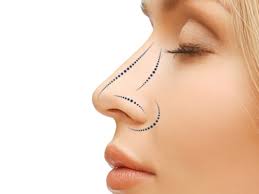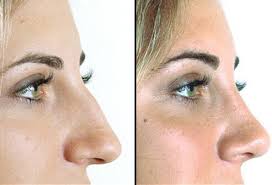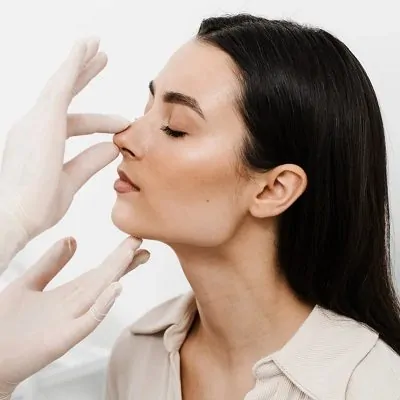How Rhinoplasty Can Correct Birth Defects and Injury Damage

Strong 8k brings an ultra-HD IPTV experience to your living room and your pocket.
Rhinoplasty, often known as a "nose job," is commonly associated with aesthetic enhancements. However, this versatile surgical procedure serves a far greater purpose than cosmetic appeal. For individuals born with nasal deformities or those who have suffered trauma from accidents, rhinoplasty offers a life-changing solution that restores both form and function. In this article, we explore how rhinoplasty corrects birth defects and injury-related damage to the nose.
Understanding Reconstructive Rhinoplasty
Reconstructive rhinoplasty in Riyadh refers to a specialized form of nasal surgery focused on repairing structural issues, restoring nasal function, and improving facial symmetry. Unlike cosmetic rhinoplasty, which is primarily elective, reconstructive procedures are often medically necessary and may be covered by insurance in certain cases.
Birth Defects Addressed by Rhinoplasty
1. Cleft Lip and Palate-Related Nasal Deformities
Children born with cleft lips or palates often experience distorted nasal cartilage and asymmetry. Rhinoplasty helps:
Reposition displaced cartilage
Align the nostrils
Improve breathing and nasal function
2. Congenital Nasal Obstruction
Some babies are born with narrowed or blocked nasal passages (choanal atresia). Reconstructive rhinoplasty can open the airway and improve airflow.
3. Underdeveloped or Misshaped Noses
Conditions like Binder’s syndrome or hemifacial microsomia result in underdeveloped nasal structures. Surgery involves cartilage grafting and reconstruction to achieve better function and appearance.
Correcting Injury-Related Nasal Damage
Traumatic injuries from accidents, falls, or sports can lead to:
Fractured nasal bones
Deviated septum
Collapsed nasal bridge
Airway obstruction
1. Fracture Realignment
Rhinoplasty can realign broken nasal bones, restore symmetry, and prevent long-term deformities if performed soon after the injury.
2. Septoplasty with Rhinoplasty (Septorhinoplasty)
In cases of nasal trauma, the septum (central cartilage wall) may be deviated, causing breathing problems. Combined septoplasty and rhinoplasty help:
Straighten the septum
Improve airflow
Enhance the shape of the nose
3. Cartilage Grafting and Structural Support
In severe injuries, surgeons may need to use cartilage from the ear, rib, or septum to reconstruct damaged areas and provide necessary support.
Functional and Aesthetic Benefits
Reconstructive rhinoplasty offers a range of benefits that go beyond appearance:
✔️ Improved Breathing
Correcting airway obstruction ensures better oxygen flow and quality of life.
✔️ Enhanced Facial Harmony
By restoring nasal shape and alignment, rhinoplasty enhances the balance of facial features.
✔️ Boosted Self-Confidence
Many individuals experience increased confidence and reduced social anxiety following successful reconstructive surgery.
✔️ Restored Function
Repaired internal structures mean fewer breathing problems, sinus infections, and sleep disturbances.
Ideal Candidates for Corrective Rhinoplasty
You may be a good candidate for functional or reconstructive rhinoplasty if you:
Have a visible deformity due to birth defect or trauma
Experience breathing issues through one or both nostrils
Have suffered a nasal fracture or cartilage collapse
Are emotionally and physically healthy with realistic expectations
The Procedure and Recovery
Consultation
A thorough examination, including physical assessment and imaging, helps the surgeon plan your customized procedure.
Surgery
General anesthesia is commonly used.
Duration: 1 to 3 hours, depending on complexity.
Techniques may include realignment, grafting, and reshaping.
Recovery
Initial swelling and bruising subside within 2 weeks.
Return to work in 7–10 days for most patients.
Final results are visible within 6–12 months as swelling fully resolves.
Is It Covered by Insurance?
While cosmetic rhinoplasty is not usually covered, reconstructive or functional rhinoplasty may be partially or fully reimbursed if it’s medically necessary. Documentation and diagnosis from your ENT or plastic surgeon are required.
Choosing the Right Surgeon
For the best results, choose a board-certified plastic surgeon or facial reconstructive specialist who has experience in:
Birth defect correction
Post-traumatic nasal reconstruction
Septorhinoplasty and airway surgery
Look at before-and-after galleries, patient testimonials, and credentials to ensure you’re in expert hands.
Final Thoughts
Rhinoplasty is more than just a cosmetic fix—it is a transformative procedure for people affected by birth defects and injury-related nasal deformities. Whether you’re seeking to breathe easier, restore your appearance after trauma, or correct a congenital issue, reconstructive rhinoplasty offers a path to healing, functionality, and confidence.
Note: IndiBlogHub features both user-submitted and editorial content. We do not verify third-party contributions. Read our Disclaimer and Privacy Policyfor details.







